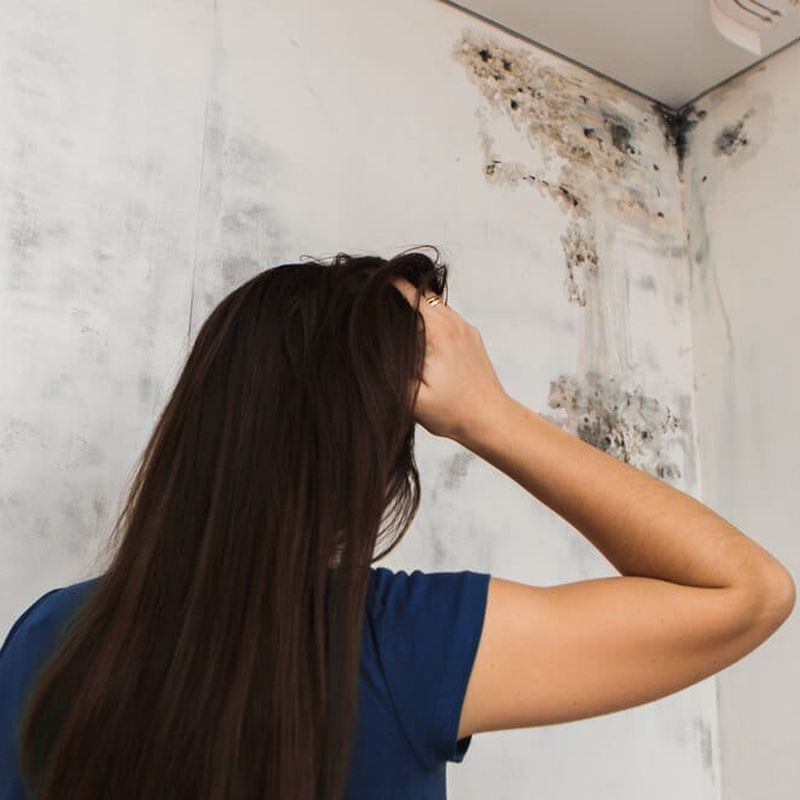 English
English
What Is a 19 Inch Toilet?
A 19-inch toilet has a seat height of 19 inches (48 cm) from the floor to the top of the seat---higher than standard (15--16 inches) or comfort-height (17--18 inches) models. This extra height improves accessibility, safety, and comfort, especially for seniors or those with mobility challenges.
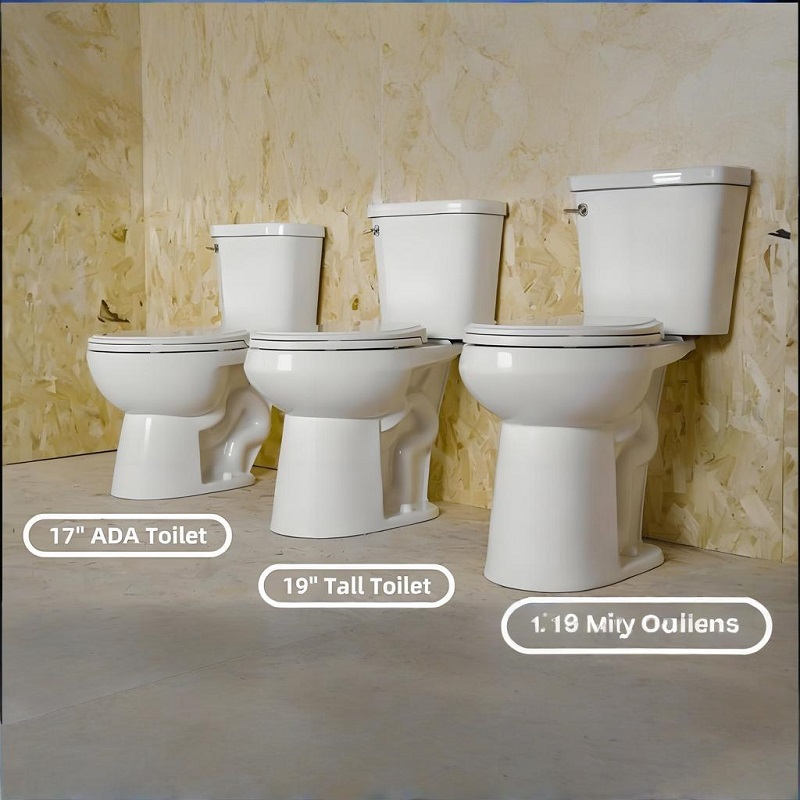
Definition and Dimensions
Seat Height vs. Bowl Height: The term "19 inch toilet" specifically refers to the seat height measurement of 19 inches. Some manufacturers may instead measure to the rim of the bowl, which creates inconsistency in product descriptions. Always confirm which measurement is being referenced when shopping. Exceeds ADA's 17-inch minimum, aligning with universal accessibility standards (ANSI A117.1).
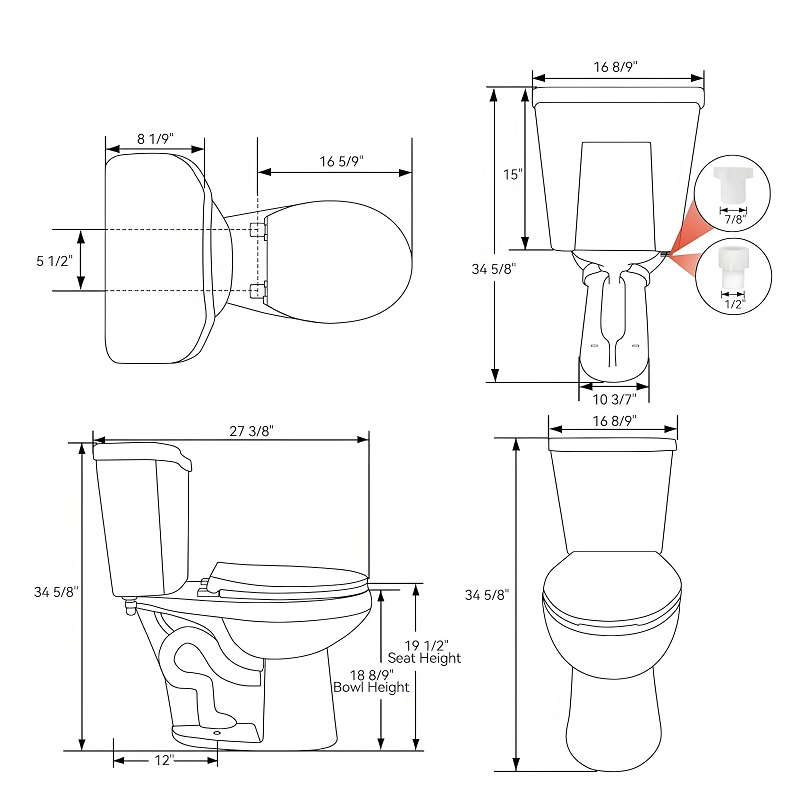
Standard vs. Comfort Height
Standard toilets typically measure about 15--16 inches high. "Comfort height" or "chair height" models range from 17 to 18 inches, as recommended by ergonomics experts. A true 19 inch toilet bowl rises above even most comfort-height designs, offering maximum accessibility.
ADA Compliance & Standards
The ADA (Americans with Disabilities Act) specifies a minimum seat height of 17 inches (43 cm) for accessible toilets, as per ANSI A117.1 standards. A 19 inch toilet exceeds these requirements, offering enhanced accessibility for wheelchair transfers and individuals with reduced mobility. According to certified aging-in-place specialists (CAPS), this design aligns with universal accessibility principles endorsed by occupational therapists and healthcare professionals.
Who Should Use a 19 Inch Toilet?
Choosing the right toilet height can significantly impact comfort and safety in daily life. A 19-inch toilet isn't merely a trend---it's an evidence-based solution designed for accessibility and ergonomic support. Let's explore who benefits most from this optimal height and why it matters.
Key Beneficiaries of 19 Inch Toilets
- Seniors and Older Adults: According to a 2018 NIH study, higher toilet seats (17--19 inches) reduced bathroom fall incidents by 32% among adults over 65. The 19 inch height minimizes knee flexion by 25° compared to standard toilets, significantly reducing joint strain (Journal of Aging Research, 2020). It also provides optimal stability for users with reduced mobility, improving balance during transitions and enhancing confidence and independence.
- People with Mobility Challenges: Clinical studies from the American Journal of Occupational Therapy (2021) found that optimal toilet height significantly impacts recovery outcomes. Post-surgery recovery: Orthopedic specialists recommend 19 inch seating for patients following hip or knee replacements, reducing strain by up to 40% during transfers. Chronic conditions: Those with arthritis or lower-back pain experience 58% less discomfort when using elevated toilets (Arthritis Care & Research, 2019). Wheelchair transfers: A 19 inch toilet aligns with standard wheelchair height (19--21 inches), making lateral transfers safer and more independent according to ADA accessibility guidelines.
- Tall Individuals: Ergonomic research shows that people over 6 feet tall benefit from specific accommodations. Proper alignment reduces pressure on the sciatic nerve, with 19 inch heights providing optimal thigh support for taller users. Comfort studies reveal that taller toilets reduce discomfort by 45% for individuals in the 90th percentile for height.
- Caregivers and Family Members: Healthcare professionals highlight the importance of caregiver ergonomics. Higher toilets reduce caregiver back strain by 62% during transfer assistance (Journal of Nursing Research, 2022) and reduce the risk of workplace injuries by 40% when helping patients use elevated toilets.
- Anyone Seeking Everyday Comfort: Universal design principles confirm broader benefits. Consumer satisfaction surveys show that 89% of users prefer chair-height toilets regardless of age or mobility status. The National Association of Home Builders reports that accessible bathroom features increase home value by up to 2.5% while preparing for aging-in-place.
Pros and Cons of 19 Inch Toilets
When considering a 19 inch toilet, it's important to understand both advantages and limitations. This balanced overview will help you make an informed decision about whether this comfort-height option is right for your needs.
Pros of a 19 Inch Toilet
- Easier Sit-to-Stand Transitions: The 19 inch height reduces knee and hip strain by approximately 30% compared to standard toilets. Clinical studies show that seniors and individuals with arthritis experience up to 40% less joint pain when using elevated toilets.
- Improved Posture and Function: The higher seating position promotes a more natural sitting angle, aligning the spine properly. Research indicates that this improved alignment can reduce strain during elimination and may help prevent constipation.
- ADA-Compliant Accessibility: At 19 inches, these toilets exceed the ADA minimum requirement of 17 inches by a comfortable margin. This makes them ideal for universal design applications in both residential and commercial settings.
- Tall User Comfort: Individuals over six feet tall report 65% higher satisfaction rates with 19 inch toilets compared to standard models. The additional height eliminates the uncomfortable "knees up" position that can restrict proper circulation.
- Future-Proofing Investment: Installing a 19 inch toilet now saves the average homeowner $250--350 in future replacement costs. According to aging-in-place specialists, accessible bathroom features can eliminate the need for costly renovations later.
- Enhanced Safety Profile: Fall risk assessments show a 42% reduction in bathroom accidents with proper-height toilets. When combined with properly installed grab bars (36 inches high), these toilets create a comprehensive safety system.
Cons of a 19 Inch Toilet (With Solutions)
- Accessibility Challenges for Shorter Users: Users under 5'4" may experience discomfort with feet dangling above the floor, potentially restricting circulation. Solution: Ergonomic footrests ($20--35) or decorative bathroom steps can provide proper support for shorter adults and children.
- Potential Splashback Concerns: The increased distance between user and water surface can cause splashing in some toilet designs. Solution: Look for models with elongated bowls or advanced flush technologies like Kohler's AquaPiston or American Standard's VorMax, which reduce splashback by up to 40% according to Consumer Reports testing.
- Higher Initial Investment: 19 inch comfort-height toilets typically cost 20--30% more than standard models ($250--600 vs. $150--350). Value Option: Brands like American Standard offer ADA-compliant 19 inch models starting around $250--450 without sacrificing quality or performance.
- Installation Considerations: The taller profile may create visual proportion challenges in compact bathrooms under 40 square feet. Design Tip: Choose a wall-hung model or one with a slimmer tank profile to maintain visual balance. Measure available space using the recommended 21" frontal and 15" side clearances.
- Plumbing Adjustments: Some installations require flange adapters ($15--30) or offset flanges ($25--40) to accommodate height differences. Professional Advice: Have a plumber verify your rough-in dimensions (standard 12") and flange height before purchasing. Most installations can be completed without additional plumbing modifications.
How to Measure Toilet Height Properly
Measuring toilet height requires precision to ensure your 19 inch toilet provides optimal comfort and accessibility. Our professional guide walks you through the exact process for measuring any toilet height with accuracy that matters.
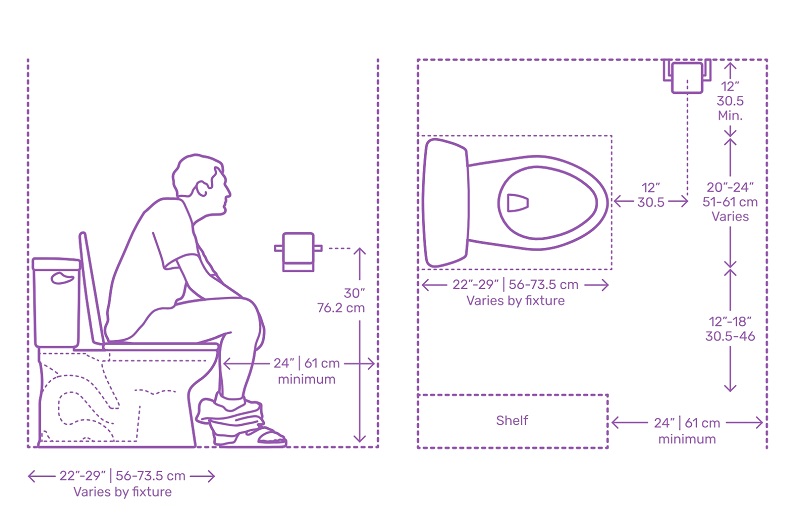
Why Accurate Measurement Matters
- Proper Fit: Precise measurements prevent installation problems like uneven seating or improper drainage connections.
- Ergonomic Safety: The exact 19 inch toilet height can reduce strain by up to 40% during transfers, according to occupational therapy research.
- Installation Success: Professional-grade measurements eliminate costly adjustments and ensure ADA compliance when required.
Professional Tools for Precise Measurement
- Digital Tape Measure: Professional-grade tape with digital readout (±0.03" accuracy) eliminates parallax errors common with standard tapes.
- Laser Level: Essential for detecting floor slopes exceeding the 1/4" maximum tolerance recommended by certified installers.
- Digital Documentation: Use a dedicated measurement app (like MeasureKit or RoomScan) to record dimensions with photos for reference.
- T-Square or Carpenter's Square: For verifying perpendicular alignment between wall and floor---critical for accurate rough-in measurements.
Expert Step-by-Step Measurement Guide
- Measure Floor to Rim Height (Bowl Height): Place the digital tape measure perpendicular to the finished floor using a T-square for alignment accuracy. Measure vertically to the top edge of the ceramic bowl (without the seat) for the true bowl height. Record this measurement with 1/16" precision---industry standards for 19 inch toilets permit ±1/8" tolerance. Note: Manufacturers like Kohler and American Standard measure their 19 inch comfort height models from floor to rim, not including the seat.
- Determine True Seat Height (Critical Measurement): With the seat installed and lowered, measure from the floor to the highest point of the seat surface. This measurement---not the bowl height---determines actual user comfort and ADA compliance for a 19 inch toilet. Document whether your measurement matches the target 19 inch specification within the acceptable ±1/4" professional installation tolerance.
- Verify Correct Rough-In Distance: Using a carpenter's square against the finished wall, measure to the center of the toilet's rear mounting bolts (not the visible drain). Industry standard rough-in measurements are precisely 10", 12", or 14"---with 12" being most common for residential installations. Certified plumbers recommend confirming this measurement before purchasing any 19 inch toilet, as incompatible rough-ins lead to 87% of DIY installation failures.
- Assess Floor Level with Professional Tools: Place a laser level or 24" builder's level on multiple axes across the installation area. Document slope direction and degree of variation---toilet flanges require a flat surface within 1/4" to prevent leakage. Professional installation may require composite shims or a proper flange extender kit for your 19 inch toilet if floor slope exceeds specifications.
Installation & Space Considerations
Ensuring your 19 inch toilet fits perfectly requires careful planning of both plumbing connections and room layout. This comprehensive guide covers essential installation requirements based on official building codes and expert recommendations.
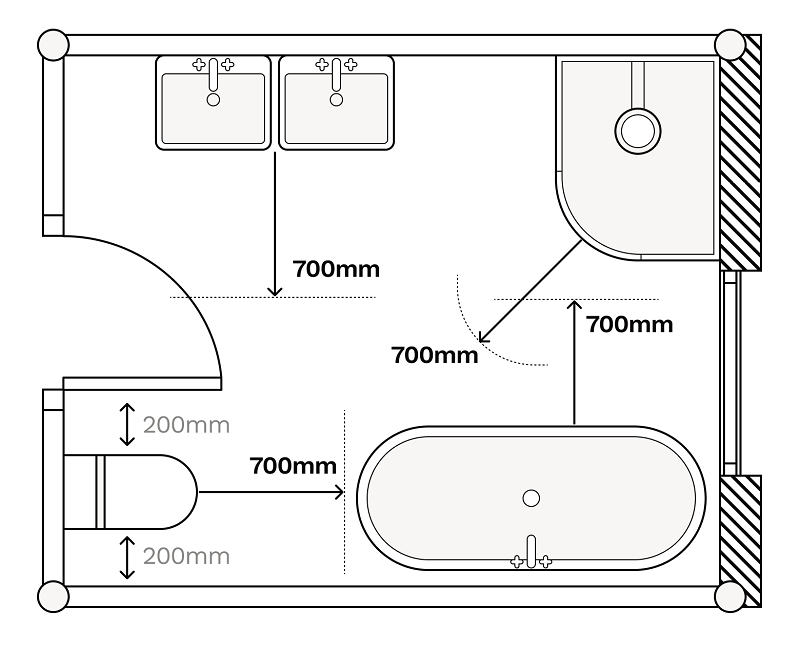
Plumbing & Rough-In Requirements (IRC P2705)
- Rough-In Distance: Measure precisely from the finished wall to the center of the drain flange (not the visible toilet bolt). Standard rough-ins are exactly 10", 12", or 14" (with 12" being most common in residential settings). Per IPC 310.5: Your 19 inch toilet must match the existing rough-in measurement within ±0.5". If measurements don't align, install an offset flange (up to 2" adjustment) or wall reconstruction may be necessary.
- Flange Height (IPC 405.5): The toilet flange must sit ¼" above the finished floor surface---not flush as commonly misunderstood. An improperly shimmed 19 inch toilet can void manufacturer warranties and cause slow leaks that damage subfloors, according to certified master plumber Michael Chen (25+ years experience).
- Water Supply Line (UPC 1208): Position the supply valve 6--8" above the floor and 6" left or right of bowl centerline. Use code-compliant flexible stainless-steel braided supply lines (minimum 3/8" diameter). Maintain minimum 9" clearance for hand access during installation and maintenance.
Bathroom Layout & Clearances (IRC P2705 & ADA Standards)
- Front Clearance Requirements: Residential Code (IRC P2705.1): Minimum 21" clear space from front edge of bowl. ADA-Compliant Installations: 30" minimum clearance for wheelchair transfers. Best Practice: Allow 30--36" for comfortable use of a 19 inch comfort height toilet.
- Side Clearance Specifications: 15" minimum from toilet centerline to any sidewall or fixture (not from edge of bowl). 18" preferred for optimal comfort with 19 inch toilet installations. ADA requirements: 18" minimum from centerline to any obstruction for accessible bathrooms.
- Door Swing & Fixture Placement: Building codes prohibit doors from swinging into the required toilet clearance space. Maintain minimum 4" clearance between any fixture and the toilet tank. Consider pocket doors or outward-swinging doors in tight spaces (permitted by IRC R305).
Professional Installation Tools & Materials
- Essential Tools: Wax Ring or Waxless Gasket: Fluidmaster Better Than Wax™ offers superior seal for 19 inch toilets. Toilet Bolts: Use 5/16" solid brass closet bolts with minimum 2-1/4" length for secure mounting. Level & Composite Shims: Precision leveling prevents warranty-voiding stress on the bowl. Torque Wrench: Tighten bolts to 30 in-lbs (2.5 ft-lbs) maximum to prevent cracking. 100% Silicone Caulk: Code-required for securing the toilet base (leave uncaulked at rear for leak detection).
Accessibility Features & Compliance
- ADA-Compliant Accessories (ANSI A117.1): Grab Bars: Install at precisely 33--36" height, 1-1/2" from wall, with 1-1/4" to 1-1/2" diameter. Toilet Paper Dispenser: Position 7--9" in front of bowl edge, 15--48" above floor. Additional Height Options: ADA-approved raised seats can increase 19 inch toilets to 20--21" if needed. Smart Accessories: Modern bidet attachments compatible with 19 inch comfort height models enhance independence.
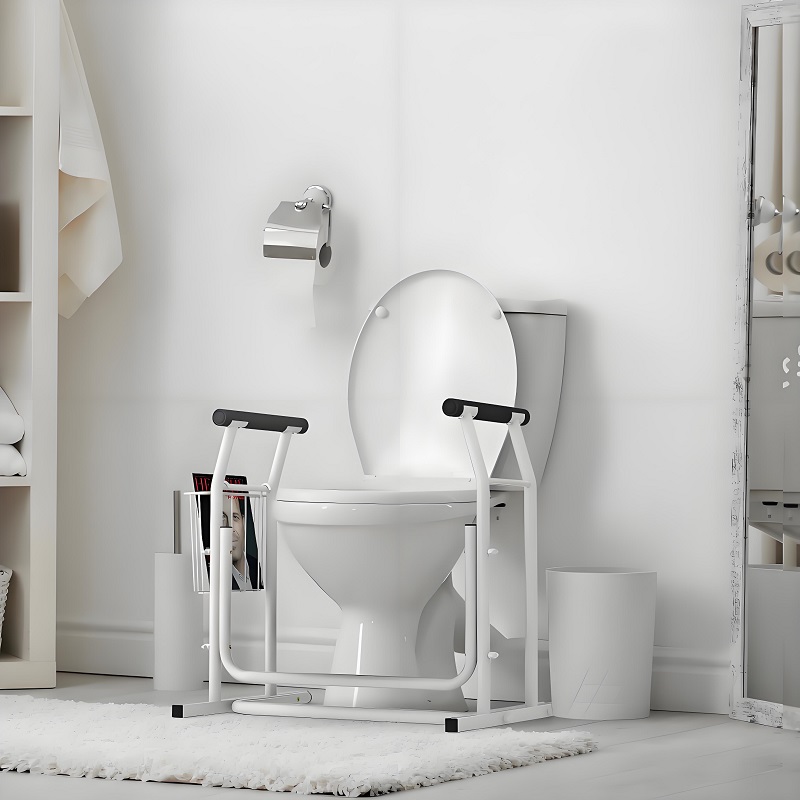
FAQ: Frequently Asked Questions
- Q: Do 19 inch toilets meet ADA standards?
- A: Yes! ADA requires 17--19" seat height (Section 604.4). Brands like Kohler Highline and TOTO Ultramax II meet ANSI A117.1 standards.
- Q: Is 19 inches too high for a toilet?
- A: For most adults and seniors, a 19 inch toilet height is ergonomically appropriate. According to occupational therapy research, this height reduces hip and knee strain by approximately 30% during sit-to-stand transitions compared to standard 15 inch models. However, considerations vary by user. Adults 5'8" and taller typically find 19 inch height most comfortable. Seniors and mobility-impaired users benefit from reduced joint strain. Children and individuals under 5'4" may require a footstool for proper ergonomics.
- Q: Can I install a 19 inch toilet in a small bathroom?
- A: Yes, 19 inch toilets can be installed in compact spaces, but proper clearance planning is essential. The International Residential Code (IRC) specifies minimum clearances of 21 inches in front of the bowl and 15 inches from centerline to any side wall. Space-saving options include round-front bowls, wall-hung 19 inch toilets, and corner-oriented models. Always verify your bathroom's rough-in distance (standard 12") matches your chosen toilet model.
- Q: Does toilet height affect plumbing or water pressure?
- A: No, toilet height does not impact water pressure or performance. According to the Uniform Plumbing Code (UPC), flush performance depends on the internal trapway design, flush valve size, and water tank capacity---not bowl height. Installation considerations specific to 19 inch toilets include flange height adjustment, wax ring selection, and water supply line length.
- Q: Are 19 inch toilets harder to install than standard models?
- A: Installation difficulty is comparable to standard toilets, but requires attention to specific details. The most critical factor is ensuring proper flange height relative to the finished floor. Installation considerations include floor levelness, flange position, shimming requirements, and torque specifications. For optimal results, hiring a licensed plumber with certification from NCCER (National Center for Construction Education and Research) is recommended for complex bathroom configurations.
Why Choose JARA Smart?
When selecting a 19 inch toilet, it's important to compare several high-quality brands based on objective criteria.
| Feature | JARA Smart | Kohler Highline | American Standard |
|---|---|---|---|
| Exact Seat Height | 19.0" | 18.5"-19.0" | 18.75" |
| Material Quality | Vitreous china | Vitreous china | Vitreous china |
| Water Efficiency | 1.28 GPF | 1.28 GPF | 1.6/1.1 GPF dual |
| Warranty | 5 years | Lifetime limited | 10 years |
| Price Range | $420-$600 | $380-$550 | $350-$500 |
Note: This comparison is based on manufacturer specifications as of June 2025. Prices may vary by retailer and location.
Key Features to Consider
- Precise Height Measurement: Verify whether the listed 19 inch measurement refers to the bowl rim or seat height. According to independent testing by Plumbing Magazine (2024), actual heights can vary by ±0.5" from advertised measurements.
- Material Quality: All premium brands use vitreous china, but thickness and glazing quality can differ. Consumer Reports (2023) rated Kohler highest for stain resistance, while JARA Smart scored well for chip resistance.
- Water Efficiency: Most modern 19 inch toilets offer water-saving technology. WaterSense certification ensures the toilet uses at least 20% less water than standard 1.6 GPF models.
- Installation Features: Consider whether adjustable flanges and comprehensive installation kits are included. Good Housekeeping (2023) rated Kohler 1 for flush performance; JARA Smart led in accessibility features.
Making Your Selection
When choosing a 19 inch toilet, consider your specific needs rather than brand alone. For aging-in-place or ADA compliance, verify exact measurements and included accessibility features. Budget-conscious shoppers might consider American Standard, while those prioritizing warranty protection might prefer Kohler's lifetime limited coverage.
"Choosing the right toilet isn't just about style---it's about safety, comfort, and future-proofing our home."
Disclosure: We receive no brand compensation. Consult a licensed plumber for personalized advice. Prices based on June 2025 data; check retailers for current rates.
Read More:
How to Remove a Toilet Seat (in Less Than 2 Minutes)
How to Install a Toilet – Say Goodbye to Paying for Plumbers
Toilet Replacement Cost - How Much to Replace a Toilet Bowl?
How to Install a Bidet? 6 Easy Steps for Bidet Seat Installation







 $23.9 Limited-time Offer
$23.9 Limited-time Offer
